The Big Read: Behind the scenes of headline-making school mergers
Singapore's biggest school consolidation exercise to date is underway. Settling on new names for the merged schools is just one small part of the challenges involved in accommodating different traditions, curriculum and uniforms.
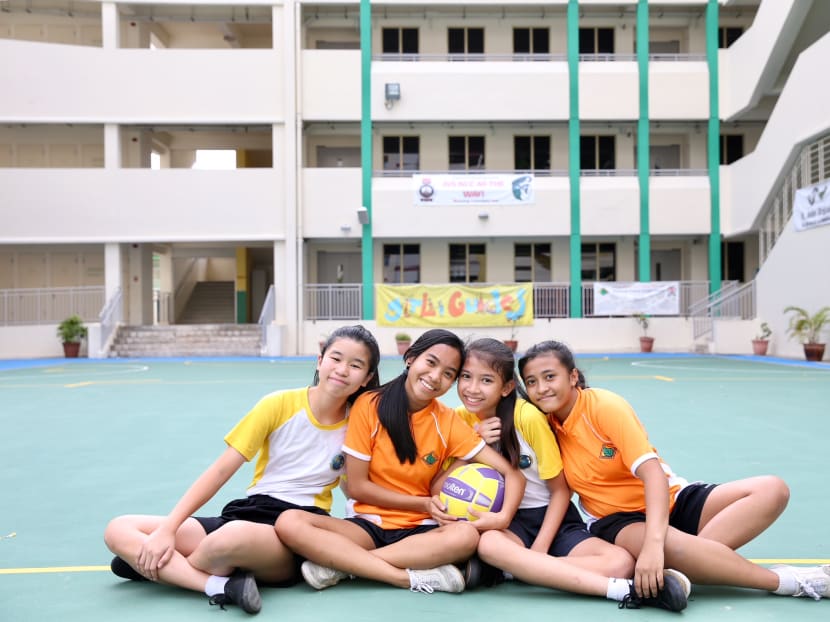
Despite being fierce rivals in the sporting arena, Hong Kah Secondary and Jurongville Secondary, for example, have combined their netball and basketball teams to compete in the upcoming West Zone Inter-Schools competition. Photo: Koh Mui Fong/TODAY
SINGAPORE – Over two meetings within a month, the student leaders from Meridian Junior College (MJC) and Tampines Junior College (TPJC) quickly reached a consensus last year on the name of the upcoming J1 orientation camp which they would jointly organise.
The camp, to be held next month, will be called Interstellar — inspired by the recent sci-fi film and symbolising the coming together of the two JCs, which are among the schools to be merged in 2019.
Having settled the name, they moved on to the design of the logo. Should they go with MJC's proposal which consist of constellations, or TPJC's idea of rocket ships and a planet?
This turned out to be a less straightforward decision, as both sides stood firm on their proposal. In the end, it went down to a vote and TPJC'S logo design was chosen. More disagreements were to surface, including which traditions of both schools to retain.
MJC students' council president Xavier Woon, 17, said they had to grapple with "two different working styles, differing views and opinions". It was a delicate balancing act to keep both sides happy, he said.
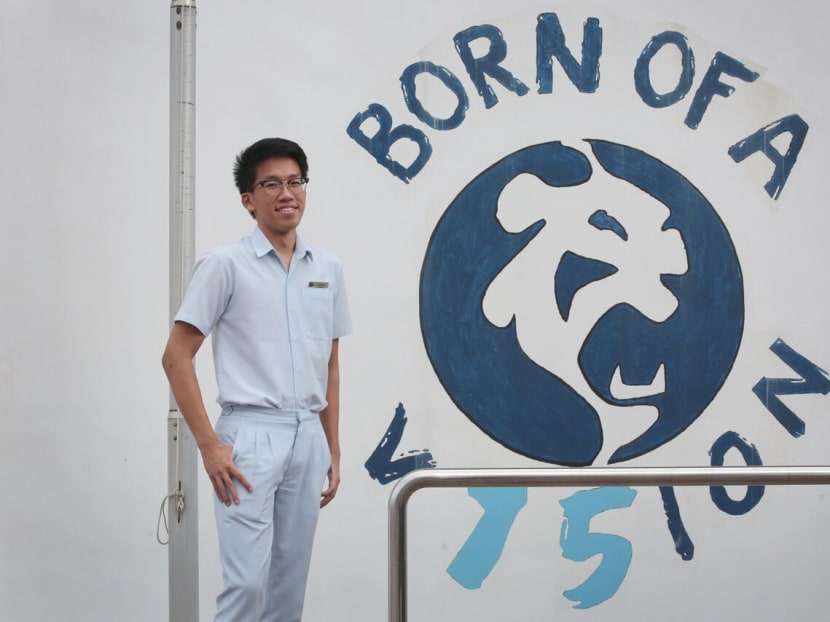
Earlier this month, it was announced that JCs to be merged next year will combine the full names of both schools.
But settling on the names — albeit being a protracted process — is just one small part of the story: From details of the joint orientation camps, to accommodating traditions passed down by seniors over the years in terms of the activities and where to hold them, student leaders say it has not been a plain sailing process. Tensions flare up from time to time, they add, even after overcoming the initial awkwardness from being thrown together and expected to work hand-in-hand from the get-go.
Teachers also took time to warm up to one another, with JCs organising bonding activities and retreats in a bid to quickly build up rapport.
For Pioneer JC (PJC) principal Tan-Kek Lee Yong, who is in her 60s and will be retiring after the merger with Jurong JC (JJC), she is trying to prevent a "schizophrenic" school identity in the year ahead, as it seeks to give its graduating batch a good send-off while being mindful of the need to prepare the Year 1s for a totally new environment.
To that end, the school came up with the idea of having their J2 students continue wearing the current uniform but designing an interim uniform — a white polo t-shirt with the emblems of both JCs — for the J1 intake this year.
In April last year, the Ministry of Education (MOE) announced the biggest school consolidation exercise to date: Twenty-eight schools – including, for the first time, eight JCs – would be merged in 2019,
The move to combine the JCs, in particular, triggered a strong public reaction. The mergers, due to falling birth rates and shrinking cohort sizes, also affected three pairs of secondary schools and seven pairs of primary schools.
Since the announcement, the schools involved have been hard at work — from the principals and teachers, to the alumni and student leaders.
In this week's Big Read, TODAY speaks to the various stakeholders and takes a look at what goes on in the schools as they prepare for a merger.
BREAKING THE ICE
In November last year, a busload of JJC student councillors arrived at the PJC campus for one of their first joint meetings to plan for the JC1 orientation camp which was to take place three months later.
There was a nervy atmosphere all round, recalled PJC subject head of talent development Lee Yanmei, 31.
The JJC students tenatively made their way to the lecture hall. But as they entered the room, the PJC councillors broke into cheers and applause. Overwhelmed, the JJC students were slightly taken aback, Ms Lee said.
But the ice was soon broken, and the two groups quickly got down to business. Before long, the student councillors and other student leaders were discussing about plans for the camp for hours at both campuses, and holding late night Skype meetings during the year-end school holidays.
The students worked well together, said Ms Lee. Among other things, the school cheers were tweaked to incorporate both JCs' names in different verses while a new combined cheer titled "Best of the West" was created. A heritage quiz on the history, milestones and quirks of both colleges was also drafted up.
At the end of the orientation group leaders' camp, some of the participants cried and one boy from PJC wrote a note saying he was sad that he would not be seeing his JJC friends for a while, said Ms Lee.
It was not just the students who had to warm up to one another.
A full-day staff retreat was organised at Sentosa in November for 130 JJC and PJC teachers.
Among other activities, the educators learnt to juggle, spin plates and walk on stilts, said Ms Esther Lee, 38, a former biology teacher at JJC who joined PJC this month. "We all didn't know (how to do these things), so it was chaos… But we learnt together, laughed together and made mistakes and that's when we (got along) together," said Ms Lee, adding that the teachers were each assigned a buddy from the other JC.
At Yishun JC (YJC) and Innova JC (IJC), their student leaders went on a trip to Hong Kong in November last year, and each of them was paired up with a person from the other school as roommates. The experience helped them to break down the barriers, and soon after the trip, they were brainstorming ideas for the orientation camp for their juniors.
WHEN 1 IS BETTER THAN 2
One of the highlights of the upcoming orientation camp for YJC's new intake is an Amazing Race-type activity where the Year 1 participants will have to race between IJC and YJC to solve clues, and in the process, become familiar with the two campuses, said YJC students' council president So Ee Cheng, 18.
YJC's subject head of physical education and co-curricular activity Karthikesan Kumar, 31, quipped that thanks to the merger, the students can organise a bigger race.
Going by the experiences of the students and educators, there would always be initial apprehension and kinks to be ironed out when two schools merge.
But more often than not, the whole is larger than the sum of its parts, with schools involved in merger exercises — be it at the primary, secondary or junior college level — tapping on each other's strengths, and students benefitting from the combined resources and teaching talent, among other things. In cases where academic programmes have to be rationalised for example, the key elements of initiatives that will be dropped could be infused into existing programmes or the curriculum.
For example. the incoming JC1 cohort at YJC will get to learn about digital literacy, given that IJC is a Centre of Excellence for New Media, said IJC principal Mr Michael de Silva, who is the principal-designate of Yishun Innova JC.
YJC head of department of communication and partnership Tan Su Linn, 35, said that by coming together, teachers have the luxury of cherry-picking from a variety of teaching materials and a wealth of ideas. "We would never have this in any other professional setting… It's a fresh set of perspectives," she said.
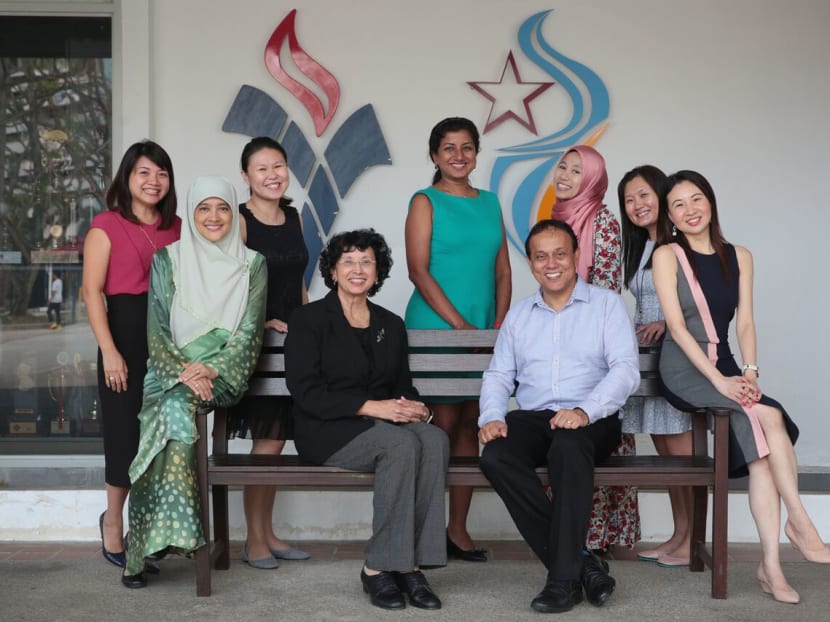
At JJC and PJC, the combined school will retain the former's Chinese Language elective programme and the latter's Malay Language elective programme — culminating in the "best of what both JCs have to offer", as PJC school staff developer Edwin Lim, 40, put it.
Following their merger next year, Hong Kah Secondary will retain its Applied Learning Programme (ALP) for electronics but Jurongville's ALP for health sciences will be dropped. Jurongville Sec principal Ong Fei Min noted that the subject of electronics is especially relevant given the prevalence of technological disruption.
Jurongville subject head of special projects Stanley Tan pointed out that pupils learning about electronics can apply elements from the ALP for health sciences – which covers food and sports science – when they are expected to create prototypes in Secondary 2, such as designing a step tracker. The learning principles could also be adapted in the merged school's curriculum for science as well as food and nutrition.
"We view it as students gaining new skills and knowledge rather than losing out on something," Mr Tan said.
Over at Cedar Primary and MacPherson Primary, the latter's teachers have been giving inputs to improve the former's ALP for creative and inventive thinking, said MacPherson Primary head of department for science Lai Tsai Yi.
MacPherson Primary does not have an ALP. For example, Cedar Primary's ALP could incorporate ideas such as getting students to create doodles based on the topics studied, to help them exercise their creativity and absorb information.
Such an approach encourages students to articulate their ideas in different forms, said Cedar Primary's teacher-in-charge of the ALP Ng Chun Hui. She said that MacPherson Primary teachers will undergo workshops to help them conduct the ALP lessons.
"We find aspects that can bind us. It is about finding the common ground," said Ms Ng.
Beyond academic subjects, mergers also help ensure critical mass for co-curricular activities (CCA).
Despite being fierce rivals in the sporting arena, Hong Kah Secondary and Jurongville Secondary, for example, have combined their netball and basketball teams to compete in the upcoming West Zone Inter-Schools competition. Hong Kah Secondary, which did not take in any Secondary 1 students this year, would otherwise have insufficient numbers to form the teams.
The netball team, for example, will comprise eight students from Jurongville and four Hong Kah students, said Hong Kah Secondary's head of department for physical education and CCA Kamarudzaman Zainam Abidin.
Hong Kah Secondary netball team vice-captain Irnny Irman admitted that it was "awkward" meeting their Jurongville counterparts initially but they quickly felt "at home".
"Even though we are still from two different schools, we compete as one. Because in the future, we will be from one school," said the Secondary 2 student.
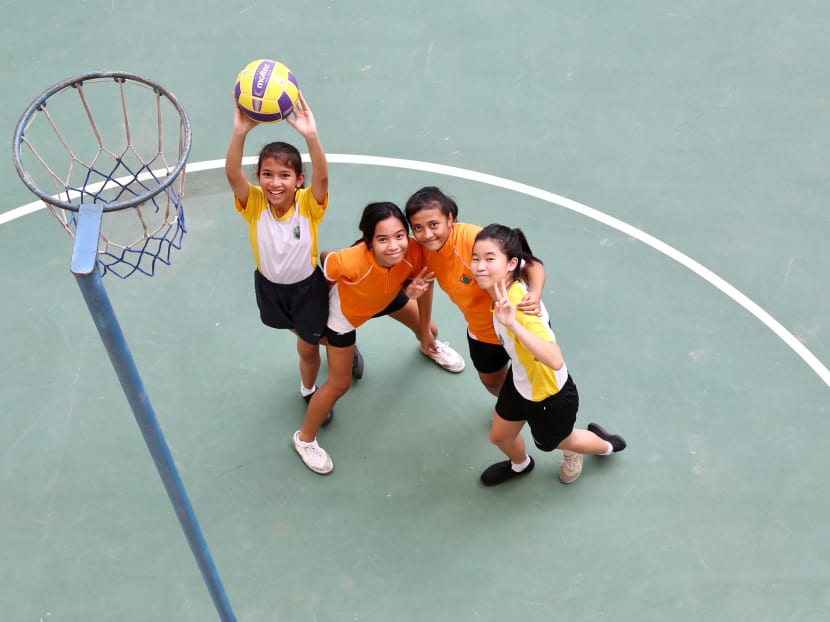
Still, there have been some anxiety among parents that their children would face stiffer competition to get into the school teams when the two schools merge, said Jurongville's head of department for physical education and CCA Joel Chia.
Mr Chia reiterated that selection will be based on merit regardless of which school the students originally came from. Bigger squads could also be accommodated as there are plans for the school teams to take part in more competitions, be it schools-based tournaments or those held by the grassroots.
Jurongville Secondary's netball team captain Nicole Sevilleja, who is in Secondary 2, said while there will be more pressure to perform, the greater competition could spur the team to do better.
RACE AGAINST TIME
For schools involved in merger exercises, it is a race against time to get all the preparation work in order before the big move.
For Jurongville Secondary and Hong Kah Secondary, discussions were underway before the official announcement of their merger, which will see the merged school keeping Jurongville Secondary's name.
Teachers from both schools held two major meetings last year on the curriculum, including the timetables for students.
Despite the early preparations, both schools said some operational details such as how many form teachers will helm each class and the teachers' workload might only be decided at the eleventh hour.
This is because the principal-designate of the merged school has not been appointed. The appointment is crucial as many decisions – both big and small such as the design of the new uniform – require the inputs and approval of the school's top leader.
Unlike the JCs that will be merged next year, the principal-designates for the primary and secondary schools involved in the same exercise have not been announced.
In response to TODAY's queries, MOE said that the appointment and rotation of principals are announced in October every year. For merging primary and secondary schools, the ministry typically appoints the principal-designates in April the year before the merged schools start operations.
MOE said it announced the principal-designates for the merged JCs earlier this month in order to "facilitate earlier preparations, as the JCs have a shorter two-year programme compared to the primary and secondary schools".
"As with previous school mergers, there is sufficient time for the principal-designates to work with the incumbent principals and the staff from both schools to ensure a smooth transition," MOE said.
The ministry noted that before the appointment of the principal-designates, the incumbent principals "work closely with one another to coordinate and plan the merger process".
"They will consider the histories of the merging schools, the sentiments of its stakeholders, and the impact of changes on its students when planning or making decisions," MOE said. It added that even when the schools decide to have a new uniform and/or school crest, they do not need to implement the changes immediately.
Hong Kah Secondary principal Sung Mee Har noted that schools can opt to retain the uniform of one of them, for example. "The leaders in both schools try to do whatever we can right now to have a smooth transition," she said.
The incumbent principals of Cedar Primary and Macpherson Primary have laid out plans for a heritage site be set up on the former's premises. But the details can only be worked out following the appointment of the principal-designate.
"Frankly, there is a need for the principal (of the merged school) to be appointed and things will move quickly. But preliminary work has to be done," said Cedar principal Sarah De Souza.
"We have to be very mindful of the timelines because the second half of the year can be quite hectic. A lot of things will be happening, but I guess it could be exciting as well."
THE HOME STRETCH
In the coming months, the schools due to be merged will have a lot on their plate.
Mrs Tan-Kek, the PJC principal, said for example, there will be 120 subject combinations on offer for the incoming J1 batch, up by a fifth. Working out the timetables is going to be a "complex, huge affair", she said.
For students with unique subject combinations, she said she was worried that they might have to stay back in school till 6pm or later.
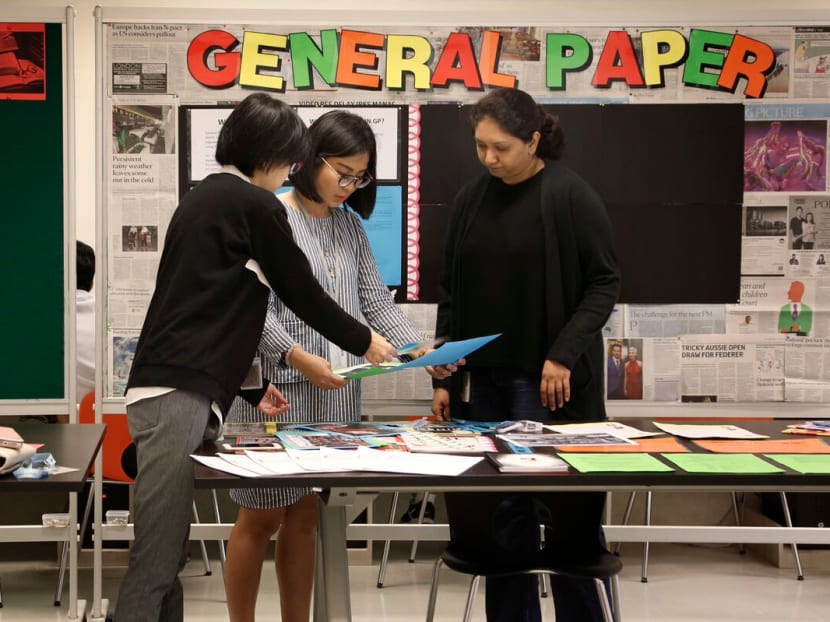
It is especially challenging in the interim year before the merger takes place because teachers would be redeployed, and the schools could find themselves short of manpower. At PJC for instance, half of its original staff strength of 150 have been deployed elsewhere. Remaining teachers will need to take on a bigger workload, with fewer teachers managing the various CCAs for example.
To prepare for the merger next year, renovations are underway at PJC including the construction of a shelter and new flooring for the basketball court. The number of science laboratories will also be increased, for instance, said Mrs Tan-Kek.
"These are real operational issues… but we will find ways around them… Rather than just feeling doom and gloom and ask 'how, how, how', I'm telling the students we're living in exciting times… It's about how we manage disruption," she said.
Agreeing, MJC head of human resources development and school staff development Wee Liang Tong, 44, said that schools will take in their stride the challenges in the interim year, which are unavoidable.
As the clock ticks down to 2019 and the school year gets busier, school leaders also must work out the intangible aspects of a merger.
Mr de Silva, the IJC principal, said that while it was easy to settle on the "big pieces" — such as which signature programmes to retain — there is still the major task of envisioning the direction of the merged JC, together with its stakeholders.
Commemorative efforts are also underway, with the alumni associations and College Advisory Committees doubling their efforts to do outreach and come up with ways to preserve the heritage of the respective schools.
IJC, for instance, will be embarking on a digital archive where old yearbooks will be compiled. Other initiatives include 360 degree videos of the classrooms and staff rooms, and audio recordings of the morning assembly music and college anthem which was written by Singaporean composer Dick Lee and English literature teacher Chitrakala Arumugam, who began teaching at IJC when it first opened its doors in 2005.
Outside of the schools, their alumni are also working on possible initiatives or events, to give former students an opportunity to bid farewell to the campuses that will be left behind, for example.
Mr Loo Cheng Chuan, 46, who chairs JJC's College Advisory Committee, said that following the announcement that the school will be merged with PJC next year, the JJC alumni Facebook page saw its number of followers increase by five times to about 5,000.
"Many alumni wanted to go back, say goodbye," he said.
The alumni associations themselves will need to work out their future. Lee Deming, 31, president of Serangoon JC's Alumni Association said the group will meet its Anderson JC counterparts to see how they can work together. He does not know, at this stage, whether the two alumni associations will continue operating separately.
As with all unions, a coming together is never easy at the beginning, as Xavier, the MJC students' council president, would attest to.
But once the kinks are ironed out, there is much to look forward to — especially for the incoming batch of students this year, he noted.
As pioneers of the merged schools, they will pave the way for future cohorts to forge new traditions and identities. "2018 is a year of transition… it's both schools working together to form a new identity," Xavier added.






